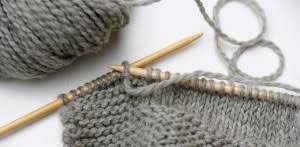Silk Organzine
The word organzine comes from Organzi, the middle aged name for a city in Turkestan now known as Urgenč, here a long time ago there was a famous silk market. Nowadays this word is referred to a silk thread twisted in opposite directions this process creates strenght.


The Origin of silk
Silk is a protein fiber from which we can obtain a very precious fabric. it comes from the cocoon of the silk worm also known as Bombyx Mori; the worm constructs its cocoon by moving its head in a figure “8” motion, it secrets fibroin, a sticky liquid protein from its salivary glands, which hardens when it comes in contact with the air. (see picture); the cocoon is made of one unbroken thread which can measure from few hundreds meters up to 3 kilometers and it’s made by 20/30 concentric layers.
The art of cultivating silk worms, started in China in 3000 B.C. and China emperors kept this process a jealously guarded secret. Despite of the chinese determination to conserve a monoply on the production, with time the secret was broken and spread to other asian countries. It was around 550 A.C. that the art of cultivating silk worms arrived in Europe; Italy was one of the most important producers. Italian silk production started to decline under the fascist regime that decided to redirect agriculture in new directions. The mulberrys trees were replaced with different crops; the end of the production happened during the second world war when population needed food.
How it’s made
The thread comes directly from the cocoon. Not all the cocoon thread can be used, furthermore it’s necessary to remove the sericin, and at the end of process it’s possible to obtain 1 kg of pure fiber from 10 kg of cocoon. The process starts by steaming the cocoon for nearly one hour to kill the pupae; subsequently the cocoons are immersed in warm water to soften the sericin which holds the cocoon together; at this point the thread can be unwound, this is called raw silk.

Charateristics
This fabric is a soft, light, elegant and quite elastic material, futhermore it is hard wearing. Above all, brightness is a much valued characteristic of the silk considered by many to be the most precious of all fibers. Fresh in summer and warm in winter, this material is an extraordinarely insulator. It can absorb humidity more than three times its weight as a result, it is ideal in hot and humid climates.
Our silk products
More info

 (Sahrij Madrasa built by Merinid – Morocco)
(Sahrij Madrasa built by Merinid – Morocco) (Merinid walls – Ceuta – Morocco)
(Merinid walls – Ceuta – Morocco)
 (Merino wool fiber)
(Merino wool fiber)







 (Kashmir)
(Kashmir)

 (Cervo river)
(Cervo river) (Silk)
(Silk)










